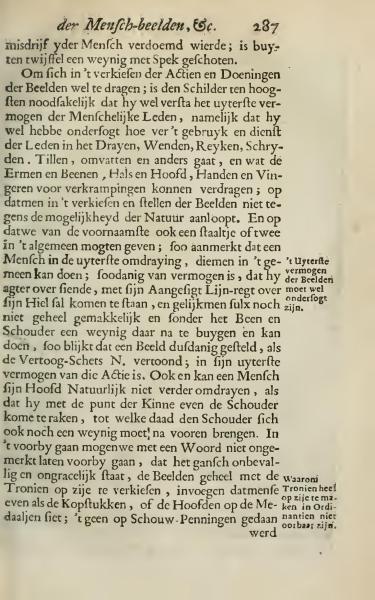The Human Figures, Etc.
Every human was condemned for a crime; certainly shot with a little lard.
To properly choose the actions and deeds of the statues; it is extremely necessary for the painter to fully understand the utmost capabilities of the human limbs, namely that he must have thoroughly examined how far the use and service of the limbs extend in turning, twisting, reaching, writing, lifting, embracing, and other movements, and what the arms and legs, neck and head, hands and fingers can endure to avoid cramps; to ensure that in choosing and positioning the statues, one does not contradict the possibilities of nature. Moreover, to provide some general examples of common movements; for instance, a person in the utmost rotation, which one typically can perform, is such that he stands with his line of sight over his heel and can achieve this without too much difficulty if the leg and shoulder do not have to bend slightly, thus demonstrating a statue as shown in Exhibit Sketch N.; which is its utmost capacity for the action. Also, a person cannot naturally turn their head further than when the point of the chin barely touches the shoulder, leading to the necessity for the shoulder to move slightly forward.
In passing by, one must not overlook mentioning that it appears extremely awkward and graceless when whole images are portrayed with faces to the side, fitting as seen in portrait heads or medallions. This is not suitable for large paintings.
Translation Notes
1. "Vertoog-Schets" means "Exhibit Sketch" or "Demonstration Sketch."
2. "Medaljen" translates to "medallions" in the context of the mention of portraiture.
3. Usage of "Schouw-Penningen" refers to large medals or coins displayed in museums.
The text discusses the importance of understanding the full capabilities of human limbs to depict movements in art accurately. It highlights how a person performs specific actions like turning and examines how far natural movements should influence artistic representation to avoid awkwardness in depictions. The text also notes the importance of avoiding graceless portrayals when positioning statues or heads in artworks.
